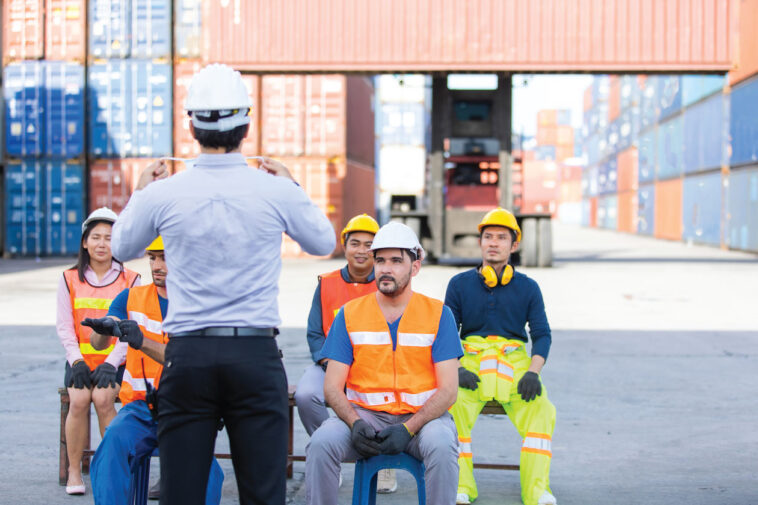Ensuring workplace safety, especially in industries where employees are at risk of falling from heights, is not just a regulatory requirement—it’s a moral imperative. Fall protection training stands out as a critical component of workplace safety, serving as the cornerstone of preventing accidents and saving lives.
This blog post delves into the nuances, outlining best practices and essential techniques designed to cultivate a safety-first mindset among employees and employers alike. With a focus on both theoretical knowledge and practical skills, this comprehensive guide aims to empower readers with the insights needed to implement robust fall protection measures effectively.
Understanding Fall Protection Training

Fall protection training is an educational process that equips workers and safety professionals with the knowledge and skills necessary to identify, evaluate, and mitigate fall hazards in the workplace. It’s a blend of theory and practice, aiming to foster a comprehensive understanding of systems, equipment, and procedures.
Effective fall protection training is vital for any work environment where the risk of falls exists. It not only helps in complying with legal and safety standards but also significantly reduces the risk of fall-related injuries and fatalities.
A well-structured training program educates workers about the various types of fall hazards, the correct use of fall protection equipment, and the importance of a proactive safety culture. This foundational knowledge is crucial for creating a safe working environment.
Best Practices
Adhering to best practices in fall protection training is crucial for ensuring that the training is not only compliant with regulations but also effective in reducing fall risks. These practices are designed to make the training process as effective and impactful as possible.
Customization and Relevance

One of the best practices is the customization of the training content to match the specific risks and needs of the workplace. Training should be relevant to the actual work environment, tasks, and equipment used by the workers. This approach ensures that the information provided is directly applicable, making it easier for workers to understand and apply what they have learned.
Continuous Learning and Evaluation
Another key practice is the emphasis on continuous learning and regular evaluation of the training program’s effectiveness. Training should not be a one-time event but a continuous process that includes refresher courses, updates on new technologies and practices, and regular assessments of workers’ understanding and application of measures. This ongoing commitment to education helps to maintain a high level of safety awareness and competency among all employees.
Essential Techniques

Beyond the best practices, certain techniques are essential for the effective delivery of training. These techniques help to ensure that the training is not only informative but also engaging and memorable for the participants.
Interactive and hands-on learning experiences are crucial. By actively involving participants in practical exercises, demonstrations, and simulations, trainers can enhance understanding and retention of the material. Hands-on activities such as using equipment, participating in rescue drills, and conducting hazard assessments allow workers to apply theoretical knowledge in practical scenarios, solidifying their learning.
The use of technology and visual aids is another essential technique in training. Interactive software, virtual reality simulations, and instructional videos can provide a more engaging and comprehensive learning experience. These tools can help illustrate complex concepts, demonstrate the proper use of equipment, and simulate fall scenarios in a controlled and safe environment, making the learning process more effective and impactful.
Tailoring Training to Diverse Workforces

Adapting it to accommodate the diversity of a workforce is essential for ensuring that all employees, regardless of their roles, languages, or learning preferences, receive and comprehend the safety information necessary to protect themselves and their colleagues.
This involves creating materials and presentations that are accessible to non-native speakers, incorporating visual aids for those who are visual learners, and providing hands-on experiences for kinesthetic learners. By acknowledging and addressing these differences, trainers can foster an inclusive environment that maximizes learning outcomes and ensures that no worker is left behind.
Conducting assessments to understand the specific needs and preferences of the workforce is the first step in tailoring training programs effectively. This involves gathering information about the workers’ backgrounds, educational levels, and previous safety training experiences. Such assessments can help trainers customize their approaches, ensuring that the training is both accessible and relevant to every participant.
For workforces that include non-native English speakers, incorporating multilingual resources is crucial. Offering materials and instruction in the primary languages of the workforce not only facilitates better understanding and retention of safety practices but also demonstrates an organization’s commitment to inclusivity and respect for cultural diversity. This approach can significantly enhance the effectiveness of safety training programs.
Leveraging Technology for Enhanced Learning

The integration of technology offers an innovative way to engage workers and enhance the learning experience. From mobile apps that provide on-the-go access to safety materials to virtual reality (VR) simulations that offer immersive learning environments, technology can transform traditional safety training into a dynamic and interactive experience.
Virtual reality stands out as a particularly effective tool. By simulating realistic work environments and scenarios, VR allows workers to experience the consequences of unsafe practices in a controlled, risk-free setting.
This immersive experience not only enhances understanding and retention but also helps workers develop practical skills for identifying and mitigating fall hazards.
Mobile learning platforms offer another technological advantage, providing workers with easy access to training materials, updates, and reminders. These platforms can support ongoing learning and engagement by allowing workers to review materials at their own pace and on their own time, reinforcing key safety concepts and ensuring that critical information is always at their fingertips.
Conclusion
In conclusion, fall protection training is a vital component of workplace safety that requires careful consideration and implementation. By understanding its importance, adhering to best practices, and employing essential techniques, organizations can create an effective training program that not only complies with legal standards but also significantly reduces the risk of fall-related injuries and fatalities. This commitment to safety education will cultivate a culture of awareness and prevention, ensuring a safer work environment for all employees.





